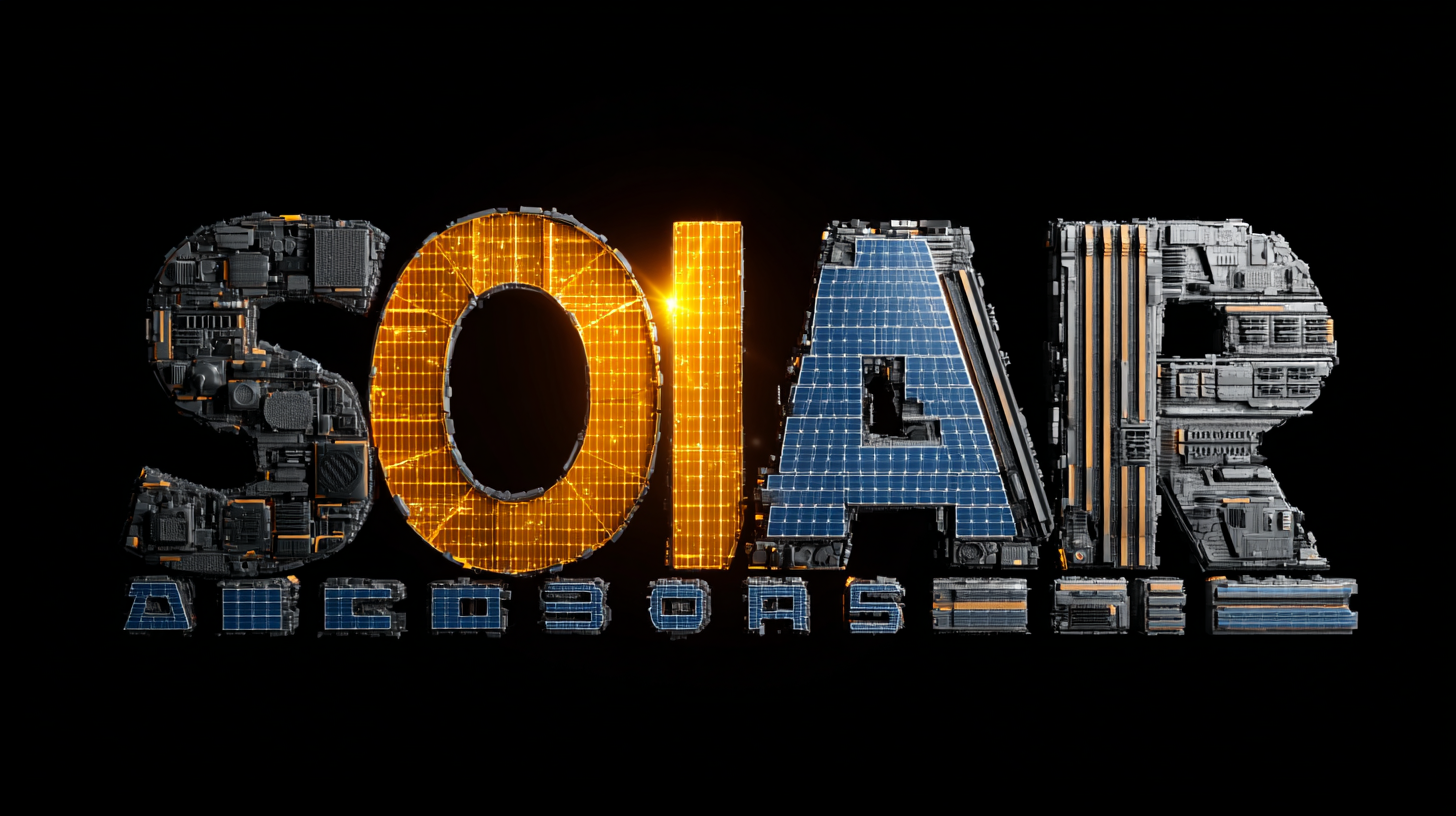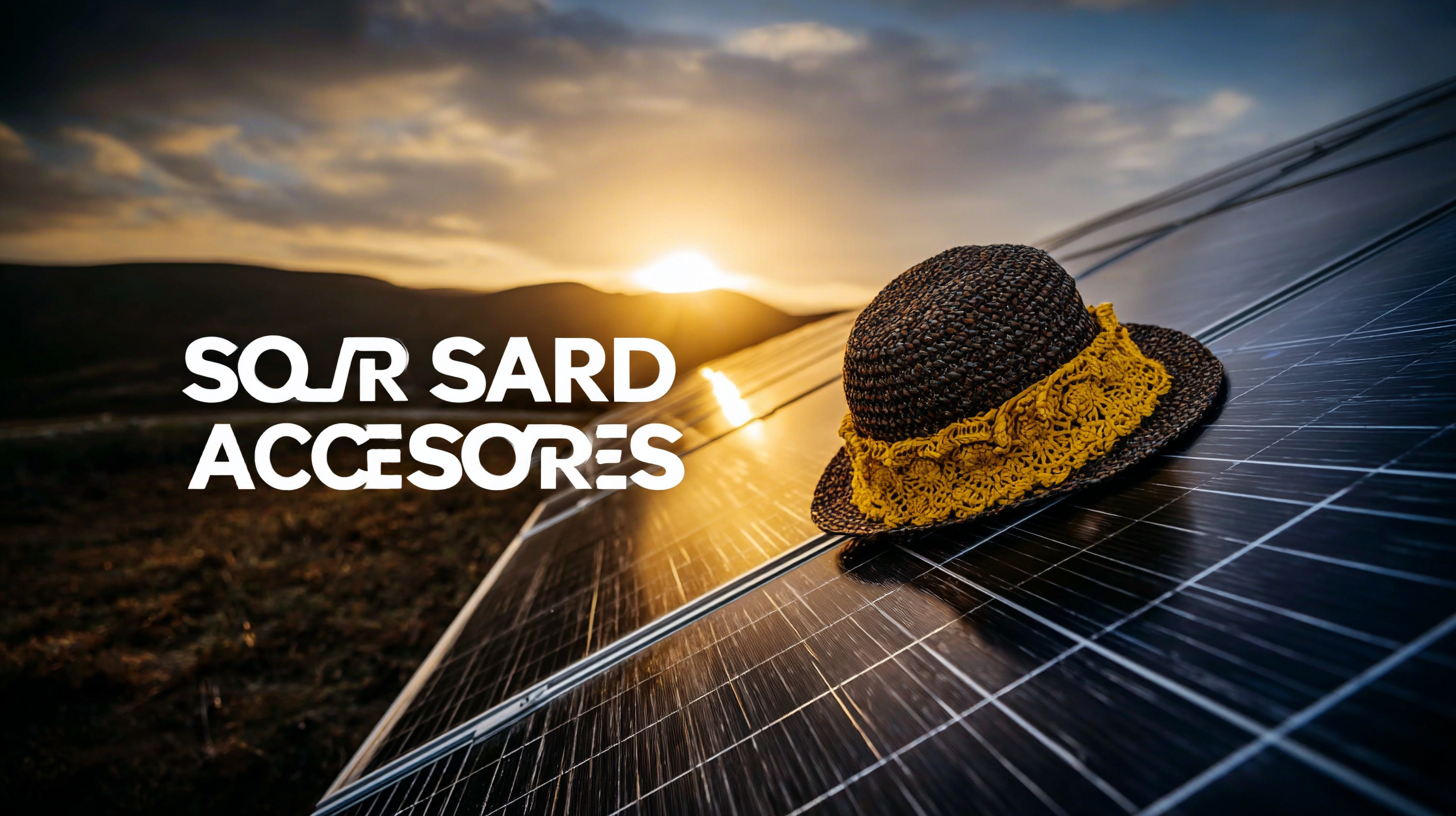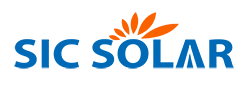As the demand for renewable energy continues to rise, understanding global manufacturing standards is crucial for the production of high-quality solar accessories. According to the International Renewable Energy Agency (IRENA), solar power capacity reached over 760 GW globally in 2020, highlighting the urgent need for efficient and reliable solar components. The quality of these solar accessories, which include inverters, mounting systems, and energy storage solutions, significantly impacts the overall performance and longevity of solar installations. Moreover, with increasing investments in the solar energy sector—projected to total $4.2 trillion by 2030—manufacturers must adhere to stringent international standards to ensure safety, efficiency, and sustainability. By implementing top strategies for compliance and innovation, stakeholders can enhance the functionality and reliability of solar accessories, ultimately driving the growth of the renewable energy industry and contributing to a sustainable future.

As we approach 2025, the renewable energy industry is witnessing an increasing emphasis on global manufacturing standards, particularly for solar accessories. With the rapid evolution of technology and the urgent need for sustainable solutions, manufacturers are urged to navigate a complex landscape of regulations and certifications that govern the production and distribution of solar components. These standards not only ensure product quality and safety but also enhance accountability within the global supply chain.
Manufacturers must familiarize themselves with various international compliance frameworks, such as ISO and IEC standards, which set the benchmarks for performance and safety in solar technology. Aligning with these standards can facilitate easier market access across different countries, as consumers and businesses alike are becoming more discerning about the products they choose. In 2025, understanding these standards will be crucial for companies that aim to differentiate themselves in a competitive market while contributing to a greener planet through reliable and efficient solar solutions.
In recent years, the renewable energy industry has experienced remarkable growth, driven largely by key technological trends. According to the International Renewable Energy Agency (IRENA), global renewable energy capacity reached approximately 2,799 gigawatts by the end of 2020, with solar energy alone accounting for over 800 gigawatts. This surge emphasizes the increasing demand for efficient solar accessories that must adhere to global manufacturing standards to ensure optimal performance and sustainability.
One notable trend is the advancement of solar photovoltaic (PV) technology, particularly in the realm of bifacial panels, which have shown to increase energy generation by 10-20% compared to traditional mono-facial panels. These innovations not only boost efficiency but also reduce the levelized cost of electricity (LCOE). Furthermore, the integration of smart technology into solar systems, such as IoT-enabled monitoring tools, allows for real-time performance tracking and predictive maintenance, enhancing the overall reliability of solar installations. As the renewable energy sector continues to evolve, staying abreast of these technological trends will be crucial for manufacturers and stakeholders aiming to deliver the best solar accessories in this dynamic landscape.
 Ensuring quality in solar accessory manufacturing is paramount for the renewable energy industry, especially as global demand for solar solutions continues to rise. According to the International Renewable Energy Agency (IRENA), solar energy capacity increased by 22% in 2020 alone, highlighting the pressing need for reliable and high-quality solar products. One effective strategy to maintain this quality is adopting rigorous manufacturing standards, such as ISO 9001, which focus on enhancing customer satisfaction through effective quality management systems. By meeting these standards, manufacturers can minimize defects and ensure the longevity and reliability of solar accessories.
Ensuring quality in solar accessory manufacturing is paramount for the renewable energy industry, especially as global demand for solar solutions continues to rise. According to the International Renewable Energy Agency (IRENA), solar energy capacity increased by 22% in 2020 alone, highlighting the pressing need for reliable and high-quality solar products. One effective strategy to maintain this quality is adopting rigorous manufacturing standards, such as ISO 9001, which focus on enhancing customer satisfaction through effective quality management systems. By meeting these standards, manufacturers can minimize defects and ensure the longevity and reliability of solar accessories.
Another critical approach is investing in advanced testing methodologies throughout the manufacturing process. A report from the National Renewable Energy Laboratory (NREL) emphasizes that rigorous testing for performance and durability can reduce failure rates, crucially in regions with extreme weather conditions. Implementing testing protocols that simulate real-world environments can provide substantial data helping manufacturers innovate and refine their products. Furthermore, collaboration with research institutions can lead to the development of new materials and technologies that boost efficiency and sustainability, setting a path towards superior solar accessory manufacturing.
In the rapidly evolving renewable energy sector, adherence to global manufacturing standards is essential for producing high-quality solar accessories. Compliance not only ensures product reliability but also enhances market competitiveness. According to the International Renewable Energy Agency (IRENA), the solar industry is projected to account for nearly 60% of the total renewable energy capacity by 2025, highlighting the urgency for manufacturers to align with international standards such as ISO 9001 for quality management and IEC 61215 for photovoltaic modules.

To meet these manufacturing regulations, companies must implement best practices such as rigorous quality control processes and continuous training for staff. A report by Bloomberg New Energy Finance states that investments in quality assurance systems can reduce defect rates by as much as 30%, directly impacting customer satisfaction and brand reputation.
Furthermore, integrating environmental standards like ISO 14001 can not only help manufacturers lessen their ecological footprint but also tap into the growing consumer demand for sustainable products. By committing to these global standards, manufacturers can ensure their place in a competitive market while contributing to a more sustainable future.
The renewable energy industry is on the cusp of revolutionary advancements, especially in solar technology. Trends to watch highlight significant innovations such as bifacial solar panels, which can capture sunlight on both sides, increasing efficiency by up to 27% according to industry reports from the International Renewable Energy Agency (IRENA). Additionally, the incorporation of artificial intelligence and machine learning in energy management systems is becoming crucial. These technologies optimize energy consumption and enhance forecasting accuracy, eventually driving down costs while improving productivity.
Tip: Stay informed about solar technology innovations by subscribing to industry reports and publications. This knowledge allows you to make timely decisions about investments in solar accessories and systems.
Alongside these trends, the rise of energy storage solutions, particularly lithium-ion batteries, presents new opportunities for solar energy use. As per a recent report by BloombergNEF, the energy storage market is projected to grow to 158 gigawatt-hours by 2024. This shift enhances the reliability of solar energy, enabling users to utilize solar power even during non-sunny hours.
Tip: Consider investing in integrated solar and storage solutions to maximize energy efficiency. This strategy ensures that the generated solar energy can be effectively stored and used, further contributing to sustainability goals.
| Dimension | Current Standard | Future Trend | Impact on Industry |
|---|---|---|---|
| Efficiency Ratings | 20-22% | 25% and above | Higher energy output, reduced costs |
| Durability Standards | 20 years | 30+ years | Increased reliability, lower maintenance |
| Recyclability | Limited | Above 90% | Reduced environmental impact, compliance with regulations |
| Cost Efficiency | $0.20 per watt | $0.15 per watt or lower | Broader adoption, increased market competition |
| Smart Technology Integration | Limited | Fully integrated IoT solutions | Enhanced user control, data optimization |
